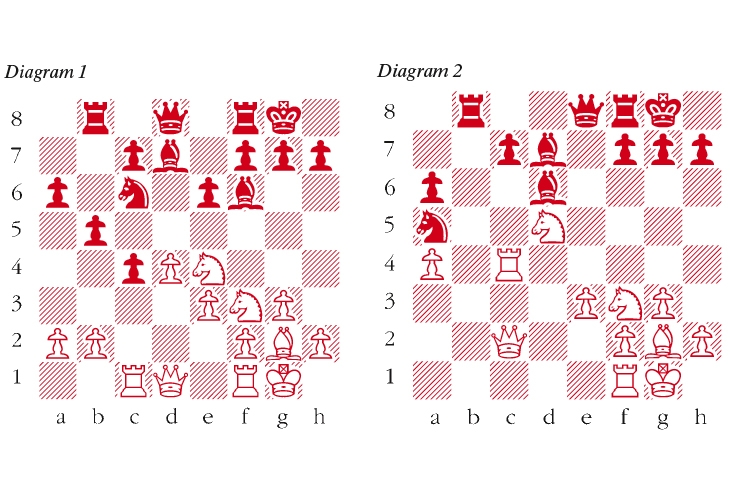The Catalan opening looks as if it should be relatively harmless, combining as it does the Queen’s Gambit with the modest fianchetto development of White’s king’s bishop. But various endgame virtuosi, notably Petrosian, Korchnoi and Kramnik, have demonstrated that the Catalan can be dangerous. In particular, the nagging pressure exerted at first by White’s light-squared bishop may persist long into the middlegame and endgame. The following notes are based on those by Neil McDonald in The Catalan: Move by Move (Everyman Chess)
Grischuk-Potkin: Villarrobledo 2009;
Catalan Opening
1 Nf3 d5 2 c4 e6 3 d4 Nf6 4 g3 dxc4 5 Bg2 a6 6 0-0 Nc6 7 Bg5 Other moves for White leading to a sharp game are 7 Nc3 and 7 e3. 7 … Be7 8 e3 Bd7 9 Nc3 0-0 10 Rc1 Rb8 At first glance it looks like Black is doing well as he is ready to support his extra pawn with … b7-b5. The way Grischuk gains control of the position will therefore come as a surprise to those not acquainted with this type of pawn structure. 11 Bxf6 Bxf6 12 Ne4 b5 (see diagram 1) Black holds on to his pawn, but now Grischuk’s plan is revealed. 13 b3 White is going to attack everywhere: on the queenside, in the centre and on the kingside. 13 … Be7 14 bxc4 bxc4 15 Rxc4 Nb4 16 a4 Qe8 17 Nc3 Nc6 Black goes passive at the wrong moment. He should have persevered with his attack on a4 with 17 … Nd5. Then after 18 Nxd5 exd5 19 Rxc7 Bd6 20 Ra7 Bxa4 21 Qa1 Rb6 22 Ne5 an unbalanced situation arises. White is attacking d5 and has the initiative in the centre, but Black’s bishop-pair shouldn’t be underestimated. 18 d5 exd5 Black can’t prevent a white knight taking up a commanding centre position, as if 18 … Nb4 19 Ne5! follows. 19 Nxd5 Bd6 20 Qc2 Na5 (see diagram 2) 21 Rh4 It is very logical for White to switch to a direct kingside attack, as Black’s three minor pieces, especially the knight, are a long way off and his queen isn’t well positioned for the defence either. 21 … h6 Black has no good way to shield h7. For example, 21 … g6 loses the queen to a fork on f6, while if 21 … f5 22 Qc3 gaining time to set up a winning sequence by attacking the black knight, e.g. 22 … Nc6 23 Ng5 h6 24 Nxc7! Bxc7 25 Bd5+ Kh8 26 Rxh6 mate. 22 Rxh6 Exploiting the potential fork on f6. Black’s position is falling apart all over the board. His king’s defences are full of holes and his pawns and pieces are mostly hanging. 22 … f5 23 Rh4 Nb3 24 Nxc7 Qe7 25 Ng5 The most energetic way to finish the game is to clear the way for the Catalan bishop to join in the attack. 25 … Qxg5 26 Bd5+ Rf7 27 Qc4 Rbf8 28 Qxb3 Bxc7 29 Rd1 More accurate was 29 Bxf7+ Rxf7 30 Rh8+ Kxh8 31 Qxf7 when Black loses a bishop, leaving him far too much material down – 31 … Qd8 32 Rd1 wouldn’t help him. 29 … Be8 30 Qc4 Be5 31 f4 Qe7 32 fxe5 Qxe5 33 Qd4 Qe7 34 Rf4 g6 35 e4 Black resigns
Raymond Keene
Catalan

issue 06 May 2017




Comments